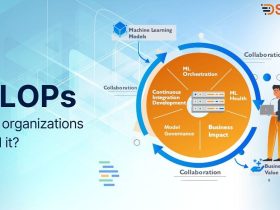1. Introduction to Knowledge Distillation
Knowledge distillation is a process of transferring knowledge from a large and complex model to a smaller and simpler model. It is a type of transfer learning, where the knowledge learned from a pre-trained model is transferred to a new model. The aim of knowledge distillation is to reduce the complexity and size of a model without sacrificing its performance.
2. The Concept of Teacher-Student Architecture
The idea of knowledge distillation is based on the teacher-student architecture. In this architecture, a large and complex model called the teacher is trained on a dataset, and its knowledge is transferred to a smaller and simpler model called the student. The student is trained on the same dataset as the teacher, but instead of directly predicting the output, it learns to mimic the behavior of the teacher.
3. The Process of Knowledge Distillation
The process of knowledge distillation involves the following steps:
- Train the teacher model on a dataset.
- Generate soft labels from the teacher model for the same dataset.
- Train the student model on the same dataset with the soft labels.
- Fine-tune the student model on the dataset with hard labels.
- Evaluate the performance of the student model.
4. Types of Knowledge Distillation Techniques
There are several techniques for knowledge distillation. Here are some of the most popular ones:
4.1 Soft Label Distillation
In this technique, the teacher model generates soft labels instead of hard labels for the same dataset. Soft labels are probability distributions over the classes, rather than discrete class labels. The student model is trained on the same dataset with the soft labels.
4.2 Attention Transfer
Attention transfer is a technique where the student model is trained to mimic the attention maps generated by the teacher model. Attention maps highlight the important regions in an image or a sequence of words.
4.3 FitNets
FitNets is a technique where the student model is trained to match the intermediate representations of the teacher model. Intermediate representations are the hidden layers of the model that capture the underlying features of the input data.
4.4 Similarity-Based Distillation
In this technique, the student model is trained to match the similarity matrix of the teacher model. The similarity matrix measures the pairwise similarities between the input samples.
4.5 Hint-Based Distillation
Hint-based distillation is a technique where the student model is trained to predict the difference between the outputs of the teacher model and the student model. This difference is called the hint.
5. Evaluating the Performance of a Distilled Model
The performance of a distilled model is evaluated by comparing its accuracy with that of the teacher model. However, since the student model is smaller and simpler than the teacher model, it may not achieve the same level of accuracy. Therefore, it is important to evaluate the performance of the student model in terms of its efficiency, speed, and memory consumption, in addition to its accuracy.
6. Advantages and Limitations of Knowledge Distillation
One of the main advantages of knowledge distillation is that it enables the creation of smaller and faster models with similar performance to larger models. This is especially useful in applications where computational resources are limited, such as in mobile and embedded devices.
However, knowledge distillation also has its limitations. It is highly dependent on the quality of the teacher model, and it may not work well if the teacher model is too complex or if the dataset is too small. Additionally, knowledge distillation may not always result in a significant reduction in model size or increase in speed.
7. Applications of Knowledge Distillation
Knowledge distillation has a wide range of applications in various fields, such as computer vision, natural language processing, and speech recognition. For example, knowledge distillation has been used to create smaller and faster models for object detection, image classification, and semantic segmentation. It has also been used to create smaller and faster models for machine translation, language modeling, and speech recognition.
8. Future Directions in Knowledge Distillation
There is still much research to be done in the field of knowledge distillation. Some future directions include developing new techniques for knowledge distillation, exploring the use of ensemble models in knowledge distillation, and investigating the transferability of knowledge across different domains and tasks.
9. Conclusion
In conclusion, knowledge distillation is a powerful technique for creating smaller and faster models with similar performance to larger models. It is based on the teacher-student architecture and involves transferring knowledge from a large and complex model to a smaller and simpler model. There are several techniques for knowledge distillation, each with its own advantages and limitations. Knowledge distillation has a wide range of applications and is a promising area of research in deep learning.











Leave a Reply